|
“We declare, pronounce, and define that the doctrine which holds that the most Blessed Virgin Mary, in the first instance of her conception, by a singular grace and privilege granted by Almighty God, in view of the merits of Jesus Christ, the Savior of the human race, was preserved free from all stain of original sin, is a doctrine revealed by God and therefore to be believed firmly and constantly by all the faithful” (Pius IX. Ineffabilis Deus).
With these words, Pope Pius IX declared ex cathedra the doctrine of the Immaculate Conception; only twice in recent history has this occurred (the other being Pius XII’s declaration on the Assumption). For centuries, the faithful have commemorated the belief that Mary, from the moment of her conception, by a loving act of God, was free from sin. This, of course, does not mean that Mary was exempt in some way from Jesus’ redemption of humanity. Rather, as Blessed John Duns Scotus put it, she acquired the greatest of redemptions through her special role in Salvation History (Lectura III Sent., 119). Many who do not agree with the doctrine argue that if Mary was not born with Original Sin or did not sin at any point in her entire life (as Church teaching proclaims), then she could not have been fully human. Therefore, if the Blessed Mother had never been born into sin and never sinned in her life, how could she have been truly human? Some reason, how could she have experienced what humanity really goes through if she didn’t live with sin? Basically, how could she have been truly free to be a person, struggling with the temptations, the ups and the downs, the “messiness” that is life? The concept of a sinless life, to many, seems boring and totally reliant on some higher being. How can one be totally dependent on God’s love? In one of his earliest homilies as Pope, Benedict XVI answered these questions quite definitively. He stated, “The human being lives in the suspicion that God's love creates a dependence and that he must rid himself of this dependency if he is to be fully himself.” Indeed, many of us feel reluctant to fully give in to the love and mercy of God for fear that we would be giving up our ability to choose to be whomever we want to be. In that case, we rely not on God’s love, but on our own powers and abilities. This may sound preferable to some, but the Pope-Emeritus reminds us, “Love is not dependence but a gift that makes us live. The freedom of a human being is the freedom of a limited being, and therefore is itself limited.” Our knowledge and abilities as humans are but a speck in comparison to God’s love. Therefore, in choosing not to live in accordance with what is right and true, we actually limit ourselves from fully living. Mary, the Immaculate Conception, is the prime example of total abandonment to God’s love – she is truly free. Though she was sinless throughout her life, Mary still faced the temptation to sin. However, because she lived in complete openness to the Lord’s will, Mary did not choose sin, but rather, chose God. In his homily, Benedict notes, “The closer a person is to God, the closer he is to people…The fact that she is totally with God is the reason why she is so close to human beings.” Sinless, she was the pure vessel, the new Ark of the Covenant, through which “the Word was made flesh and dwelt among us” (John 1:14) She is the mother of God, and thus, the mother of Love itself, for God is Love. (cf 1 Jn 4:8) Living in that love, she calls out to us: “Have the courage to dare with God! Try it! Do not be afraid of him! Have the courage to risk with faith! Have the courage to risk with goodness!...so that your life will become broad and light, not boring but filled with infinite surprises, for God's infinite goodness is never depleted!” Today, on the Solemnity of the Immaculate Conception, Pope Francis has proclaimed the opening of the Extraordinary Jubilee of Mercy. Please visit our Year of Mercy resources by clicking here. Victor David is a collaborator with the Catholic Apostolate Center and a staff member at The Catholic University of America in Washington, DC.
0 Comments
What does it mean to be a human person? Psalm 139:14-15 proclaims, “I give you thanks that I am fearfully, wonderfully made; wonderful are your works. My soul also you knew full well; nor was my frame unknown to you when I was made in secret, when I was fashioned in the depths of the earth.” Despite physiological or personal obstacles, each member of God’s children deserves to feel comfortable in their own skin. At its core, health and wellness maintains a sense of individuality that spans many shapes, sizes, and functionalities. In every stepping stone of my career as a health and wellness professional, I have lived by this ideal. As an active Catholic, I also believe in the spiritual aspect of health and wellness. However, it is only recently that I have begun to realize the weight of what this means to me as a Catholic professional in today’s society. When the proclamation of this psalm began to speak to my heart and, more importantly, when I began to listen, my interpretation of the philosophy that has been written on my heart for so many years burst forth into a new light.
There are a multitude of outside influences that are attempting to tear down the human person as designed by God. Secular society tends to create boxes to place every person inside. The secular world in which we live wants us to think that they celebrate individuality, while simultaneously expecting us to meet the standards that they are creating. We are placed in a certain box based on our physique, appearance, material goods, professional success, and the list goes on. In turn, we become self-focused. Life either becomes a game of getting ahead and finding the easiest way to receive instant gratification or a retreat into the darkness of, “I’m not good enough”. Our bodies are truly a temple for the Holy Spirit. Sadly, society not only ignores the responsibility that comes with such a gift, but impresses upon us that “being fit” or rejoicing in the comfort of our God-given skin must conform to the box in which society presents. So, what is the good news? The human person, as designed by God, was not designed to be placed in a box. Pope Benedict proclaimed, “The ways of the Lord are not easy, but we were not created for an easy life, but for great things, for goodness.” I assure you, the greatness Pope Benedict XVI speaks of does not fit in a box. God saw and loved in His Son what He loves in us: humanity. We are a Resurrection people made in the image and likeness of our God, the resurrected Body of Christ. You, a human person, are made in His image and likeness. We truly are the body of Christ. Therefore, it is essential to look after all aspects of our wellness from this perspective. Rejoice and praise Him with song, dance, movement, human interaction, and day to day life. If we can strive to live this realization together, we can experience something extraordinary, life-altering, and full of excitement, motivation, and healing. These are the thoughts and ideals that I strive to live by and share with those that I meet. “Do not conform yourself to this age but be transformed by the renewal of your mind, so that you may judge what is God’s will, what is good, what is pleasing, and perfect.” (Romans 12:2) Elaine Seckar is the Wellness Coordinator at Saint Patrick Church and a Fitness Clinician for United Cerebral Palsy of Central PA in Carlisle, Pennsylvania. During the spring of 2008, I was a freshman at The Catholic University of America in Washington, DC. I was nearing the end of my first year of school, preparing to enter into finals, and attempting to figure out what my plans were for the summer. A few months prior, it was announced that Pope Benedict XVI would be visiting the D.C. during his US Papal visit. Furthermore, he would be speaking at the Basilica of the National Shrine of the Immaculate Conception and The Catholic University of America in subsequent days. To say I was a little excited for my first Papal Visit is a bit of an understatement. I remember vividly watching him ride in the Popemobile in front of the Basilica on the Wednesday of his arrival, the next day participating in the celebration of the Mass with Pope Benedict XVI in Nationals Park, and finally, seeing him drive near the Catholic University Law School lawn before his talk on the importance of Catholic Education. He greeted the crowds that came to see him. The people present were excited simply to be a part of that moment in history. As I write this on Sept 15th, Pope Francis will be arriving in the United States in less than a week. That same excitement fills the air of our nations’ capital. That same excitement fills my heart as much as it did over seven years ago. Why is it that we should be excited for his arrival? In the age of computers, smartphones, and the 24/7 news media cycle, everyone can be a witness to Pope Francis and his message all the time. The excitement that I feel about his visiting the United States comes from a sense of honor and pride. Of all the countries in which Catholics live (and there are many), the choice of the Pontiff to visit our country brings a sense of pride to be a member of the nation that is experiencing history. As a note, this is not only Pope Francis’ first visit as pontiff to our country, it is also his first time ever visiting our country. When Pope Francis arrives at Joint Base Andrews, United States Catholics around the country will watch, participate, and attend the events that Pope Francis will be a part of in Washington, D.C., New York City, NY, and Philadelphia, PA. Throughout six days, Catholics around the country have the opportunity to join in welcoming Pope Francis to our country. Whether through attending, participating, watching, or praying, all US Catholics can join in a celebration of the Pope’s visit and (hopefully) pride in understanding the momentous occasion of the event. It will hopefully renew that most perfect love, the love between God and man. In many ways, this visit from September 22-27 will be a great event and moment of potential evangelization. What will we do on September 28? Will we simply go back to our lives as if this event never happened? This thought leads me back to my spring experience in 2008 because that is exactly what I did after Pope Benedict traveled back to Rome. As important and great as is the visit of a pope to your country, the words and actions of the pope during his visit are what should ultimately serve as a stepping off point in our evangelization journey. It doesn’t have to be something grandiose and over the top. Simple, sustainable acts of charity and prayer are enough to carry on the message of the Pope that was espoused when Francis was here. Fortunately for us, Pope Francis gave us a simple direction in his Apostolic Mission message: Love. Love is our primary mission as Catholics in the United States, and while this can be difficult to do, it is an important mission to carry forth when we watch Pope Francis leave from Philadelphia.
“How beautiful are the footsteps of those who bring Good News” (Romans 10:15-17)! With these words of Isaiah quoted by Saint Paul, Pope Emeritus Benedict XVI warmly greeted the cardinals, bishops, and educators assembled at The Catholic University of America during his April 2008 apostolic visit to the United States. Seven years later, Pope Francis will be following in the footsteps of his predecessors as he brings the Good News to our nation. He is the fourth pontiff to do so. While the good news of Christianity itself hasn’t changed in two thousand years, its Argentine messenger is certainly electrifying the faithful with his personality of joyous humility, simplicity, and compassion evident in the course of his evangelization--specifically renewed calls to holiness and having an unreserved love of neighbor. And yet, it is all too easy to become lost in the so-called “Francis effect” (and attempts to get a papal selfie) and forget to pay attention to the message of His Holiness. A visit by the Vicar of Christ is certainly a rare occasion to be celebrated, but when it comes down to it, are we honoring the man visiting us or the One who authored the Good News in the first place?
I remember first reading the interview published by America magazine conducted by Fr. Antonio Spadaro, S.J. with the newly elected Pope Francis, desiring to hear from the man himself instead of the wild speculations and analysis drawn up by the media. To answer the first question of “Who is Jorge Mario Bergoglio?” the pope candidly responded, “I am a sinner. This is the most accurate definition. It is not a figure of speech, a literary genre. I am a sinner.” I was deeply touched to be able to identify with the earthly head of the Church in this way, thinking, “The Holy Father is a sinner… like me?!” But remaining a sinner is not what we are called to be as Christians. Accepting his election as pontiff, Pope Francis replied, “I am a sinner, but I trust in the infinite mercy and patience of our Lord Jesus Christ, and I accept in a spirit of penance.” These words are truly fitting for the “Servant of the servants of God”: a humble acceptance of God’s will and the call to give witness to His love by carrying one’s cross and serving others in imitation of Christ. We frequently see the Holy Father’s simple and charitable acts of love in global headlines. In a world so unfamiliar with loving one’s neighbor, it’s really no wonder why people find this shocking and out of the ordinary. But each of us, no matter our status, is called to give the same loving witness in our daily lives— love is our mission, after all! Remember that these acts, no matter how small, are an especially meaningful aspect of our Faith: Because Christ is the source of all our good works and is himself the truth of our faith, there is an indissoluble union between truth and love. It is the truth of our faith that guards our charitable works from becoming empty philanthropic endeavors. Our faith makes our charitable works building blocks of the Kingdom of God here on earth, blocks that can be used to build the Church on the cross of Jesus Christ. Our charitable work, on the other hand makes our faith visible and a real part of the world in which we live. The living truth of faith makes our works really good, and our good works reveal a true and living faith. (To see the full text, click here.) His Holiness is certainly aware that the eyes of the world are fixated upon his every deed. Instead of accepting the praise and lauds, he quietly continues to make each an opportunity for evangelization in the hopes of inspiring others to begin to tend to their neighbors. When Pope Francis arrives in the United States next month, remember to take the time to pray for him as he spreads the Good News, that God may grant him the strength, courage, and wisdom needed to touch hearts and that our Lady may grace him with her continued protection. Especially take the time to worship and adore the Author of Love who perpetually resides in the tabernacle of your local church— drawing near to Him requires no special security clearance, rank, or ticket, simply an open heart and a willingness to listen. Finally, pray that once Shepherd One (the name for the Air Italia plane the pope flies in) has departed for Rome, the seeds planted by His Holiness will grow to inspire us to continue the mission of love which has been entrusted to each of us. For more information on Pope Francis' Apostolic Journey to the U.S., please click here. 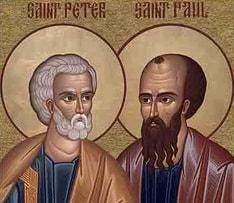 Yesterday, we celebrated the Solemnity of Sts. Peter and Paul, which gives the faithful the opportunity to reflect on many different subjects. For instance, it is on this feast that the Pope traditionally presents the pallium to newly installed metropolitan archbishops, signifying their union with the Holy See. The feast is also important for the ecumenical movement because it is on this day that leaders of both the Catholic and Orthodox churches come together to pray and work towards full communion. However, one theme that seems to be missed is that of God’s mercy as exemplified by the lives of these two leaders of the early Church. And with the Jubilee Year of Mercy upcoming, one might want to look to these great saints for some inspiration. One of the most well-known moments of the Passion is when Peter denies Christ three times (Mt 26:69-75) even after promising Jesus that, “though all should have their faith shaken, mine will not be” (Mk 14:29). Likewise, Paul also denied Jesus by his persecution of the disciples. He even takes part in the death of the first martyr, St. Stephen (Acts 7:58-60). If their stories had stopped there, we might judge the first as a fare-weather follower and the second as a ruthless fanatic. Yet, we know that is not how the story ends. In the Gospel of John, Jesus appears to his disciples as they are fishing. They are eating breakfast on the shore when Christ asks Peter three times, “Do you love me?” to which Peter replies yes twice and at the third time says, “Lord, you know everything, you know that I love you” (Jn 21:15-17). And thus, Peter is redeemed and given the charged by Jesus to “Feed my sheep.” He becomes the leader of the early church and by tradition is regarded as the first pope. On his way to Damascus, Paul sees a bright light from the sky and voice crying out, “Saul, Saul, why are you persecuting me?” (Acts 9:4). The voice is revealed to be that of Jesus himself. Blinded by the light, Paul enters Damascus when one of Jesus’ disciples, Ananias, lays his hands on him at the Lord’s command. Upon doing so, Paul’s vision is regained, is baptized, and goes on to preach the Gospel throughout the Mediterranean. Pope Benedict XVI reminds us that, “The Church is not holy by herself; in fact, she is made up of sinners…Rather, she is made holy ever anew by the Holy One of God, by the purifying love of Christ.” Similarly, Pope Francis recalls, “[God] never tires of forgiving, but at times we get tired of asking for forgiveness…He is the loving Father who always pardons, who has that heart of mercy for us all.” The lives of Sts. Peter and Paul show us that no one is beyond forgiveness, so long as he or she seeks the mercy of God. Therefore, these two great pillars of the Church are a great reminder to have as we approach the Jubilee Year. Victor David is a staff member at The Catholic University of America in Washington, D.C.
“…we even boast of our afflictions, knowing that affliction produces endurance, and endurance, proven character, and proven character, hope, and hope does not disappoint, because the love of God has been poured out into our hearts through the Holy Spirit that has been given to us.”
Romans 5:3-5 A few weeks ago, during our celebration of the Solemnity of the Most Holy Trinity, this portion of St. Paul’s letter to the Romans was read to faithful Catholics throughout the world. I had the privilege of attending a bilingual Mass that weekend with my girlfriend, Kara, in a high school gymnasium. The different setting, unfamiliar language, and unusually large number of altar servers hardly crossed my mind as we participated in Mass at Most Holy Trinity Parish, on this, their solemnity. It was a beautiful liturgy to say the least! What struck Kara and me most about our experience, however, were these lines from the second reading: How many of us know someone who is afflicted? We all have family members, friends or colleagues that are struggling with cancer, unemployment, depression, etc. In the daily news - local, national and international - we hear about gun violence, war, natural disaster, and famine. Even more simplistically, we each have ‘good days’ and ‘bad days.’ St. Paul reminds us that affliction is not something to run from because ultimately, we “boast in hope of the Glory of God” (Romans 5:2). His ‘flow chart of hope’ is a reassuring message of what true faithfulness yields and how God makes His love present to each of us in our struggles. The alternatives to hope (sin, despair, discouragement, impatience, fear, anxiety, guilt…)_ when left unchecked, are a rejection of God’s invitation to deeper communion with Him. Very basically, this reading offers us a roadmap to understand how affliction does not have the final word; hope does! Pope Benedict XVI’s homily at Nationals Stadium during his 2008 Apostolic Visit to the United States speaks to this point: “It is a prayer of unfailing hope, but also one of patient endurance and, often, accompanied by suffering for the truth. Through this prayer, we share in the mystery of Christ’s own weakness and suffering, while trusting firmly in the victory of his Cross.” We are able to endure our own afflictions because of the hope promised to us by God. Pain, suffering, and struggle are not pleasant, especially when they are affecting someone we know and love. As people of faith, though, we believe God is with us, united in our affliction and made present to us in the love we experience. This faith, this hope, and this love, offer us momentary comfort and strength as we journey to the ultimate glory of complete communion with God. We have a common call to share this hope with those around us, especially with those who find it difficult to endure in times of struggle. This simple reminder of the universality of the Church also reminds us that through prayer, “we become capable of the great hope, and thus we become ministers of hope for others” (Spe Salvi, 34). And so, as we are confronted with affliction, our prayer should be one of hope. As others struggle with affliction, our response should be one of hope. And as we begin to question why affliction affects our lives, we must remember that affliction yields hope; hope in the love of God. “Hope, O my soul, hope. You know neither the day nor the hour. Watch carefully, for everything passes quickly, even though your impatience makes doubtful what is certain, and turns a very short time into a long one. Dream that the more you struggle, the more you prove the love that you bear your God, and the more you will rejoice one day with your Beloved, in a happiness and rapture that can never end.” St. Teresa of Avila, The Exclamations of the Soul to God, 15:3. Jonathan Jerome is the Director of Catholic Campus Ministry at the University of Pittsburgh Johnstown. Editor's Note: This post was originally published on June 13, 2013 One month ago, I had the privilege of celebrating Mass on the altar above the tomb of St. John Paul II. Our small pilgrimage group had requested a Mass at one of the altars, either in the crypt or in St. Peter’s Basilica itself. We never expected that we would be given this particular altar, and all in the group were rather excited. One of my friends, who is an American serving on the general council of his religious community, asked me how we had arranged it. He had been trying for months through various contacts in the Vatican. I told him how we asked simply for a Mass in the basilica. Of course, he was very surprised that no special arrangements had been made. I was simply thankful to the Holy Spirit for arranging it and giving both the pilgrims and me such an important spiritual opportunity. As we made our way to the altar of St. John Paul, we went by the tomb of St. John XXIII. I hope someday to celebrate a Mass on the altar above his tomb as well. Both are personal heroes of mine because of their efforts to expand the role of all in the Church, especially the laity, which was so central to the charism of the founder of my religious community, St. Vincent Pallotti. In his homily for their canonizations, Pope Francis spoke about the efforts of these two popes in this regard:
John XXIII and John Paul II cooperated with the Holy Spirit in renewing and updating the Church in keeping with her pristine features, those features which the saints have given her throughout the centuries. The renewal and updating of the Church called for by the Second Vatican Council, initiated by St. John XXIII, is central to the work of the New Evangelization as articulated by St. John Paul II. This work continued through the efforts of Pope Emeritus Benedict XVI, especially in the Synod on the New Evangelization, and is finding even greater momentum through the witness of Pope Francis. All of them, along with Blessed Paul VI, the teaching of the Council, and Church leadership in general, have called all of the baptized to engage in greater co-responsibility for the life of the Church and for the work of evangelization. When Pope Francis canonized St. John XXIII and St. John Paul II together, various pundits, both in Church and secular media, were quick to give their sometimes very simplistic analysis of the message that he was trying to convey. If there was any “message”, I believe that it is a continued or re-commitment to the on-going renewal of the Church in trustful cooperation with the Holy Spirit and in prayerful communion with the saints. St. John XXIII and St. John Paul II were both visionary leaders who put forward programmatic plans for not simply renewal of the Church as an institution, but renewal of all the baptized in faith and holiness who are called to go forth into the world and renew it as well. In 1959, St. John XXIII said, “Profession of the Christian faith is not intelligible without strong, lively apostolic fervor” (Princeps Pastorum, 32). The Second Vatican Council confirmed this understanding in Lumen Gentium through its teachings about the Universal Call to Holiness and the role of all the baptized in the mission of Christ. St. John Paul II was one of the drafters of the Decree on the Apostolate of the Laity (Apostolicam Actuositatem) along with the then Rector General of the Society of the Catholic Apostolate, Fr. Wilhelm Möhler, S.A.C. St. John Paul taught in his apostolic exhortationChristifideles Laici, which followed the Synod on the Laity in 1987, that The Second Vatican Council has reminded us of the mystery of this power and of the fact that the mission of Christ – Priest, Prophet-Teacher, King – continues in the Church. Everyone, the whole People of God, shares in this threefold mission’” (14). Sharing in the mission of Christ is not simply staying within the confines of the church building. Instead, especially in this time of the New Evangelization, all of the baptized are called to recognize that they are followers of the Christ who are sent on mission by him. In fact, Pope Francis even calls the baptized, in Evangelii Gaudium, “missionary disciples” (120). Fr. Frank Donio, S.A.C., is Director of the Catholic Apostolate Center and teaches for Saint Joseph’s College Online. This blog post was first published on February 4th on the St. Joseph’s College of Maine Theology Faculty Blog. Click here to learn more about our cooperative alliance with St. Joseph’s College Online This past Sunday, the final Sunday of the liturgical year, we celebrated the Solemnity of Our Lord Jesus Christ, King of the Universe. On this solemnity, the Church recalls the sovereignty of our Lord over the universe and in our hearts. We are called to look forward to the “definitive and eternal kingdom of Christ”, which Pope Emeritus Benedict XVI identified as “the ultimate goal of history”. Having been with the Father at the very beginning, when the world was “without form or shape” will fully manifest His lordship at the end of time (cf Genesis 1:2). This past Sunday’s reading from St. Matthew’s gospel presents the great scene of this final judgment, where He who “sits upon His glorious throne with all the nations gathered before Him” will separate the “sheep from the goats”, that is, identify those who have recognized and accepted the Word of God and its messengers and those who rejected it (Matthew 24:31-32). The point of the Gospel, is not so much identifying who are the sheep and who are the goats, but, as Pope Francis noted, determining whether we live our lives in “imitation of Jesus’ works of mercy through which He brought about His kingdom. “
Christ’s reign is unlike any earthly notion of kingship (cf. Matthew 21:1-11). He completely identifies Himself with the poor, the sick, and the afflicted. He does not ignore the weak, the needy, or the marginalized. Christ’s kingdom is one of love, service, and Truth, not one built up by weapons, violence, or a lust for power. Unfortunately, Christ’s contemporaries frequently misunderstood the kingdom being preached as an earthly, political one. After the multiplication of the loaves, for example, the masses were so enthralled by the miracle that they wanted to declare Jesus as their king on the spot to overthrow Roman rule. Later, in the Garden of Gethsemane, a zealous Peter begins to fight those who came to arrest Jesus. Both times, Jesus knows the will of His Father must be completed: He withdraws to pray in the first instance, and, after rebuking Peter, submits to the mob in the second. Hearing of a new kingdom and servants, the Pontius Pilate has Jesus presented before him, but is taken aback at what he sees: the one who dared to challenge the might of Rome has been abandoned by his followers, and his enemies are crying for a most humiliating execution (cf. John 18:37). The Roman governor asks Jesus, “Are you the King of the Jews?” (v. 33). In spite of the injury and insult He is suffering, Jesus clarifies the nature of His kingship, which is no worldly power but a Love which serves. He states that His kingdom is in no way to be confused with a political reign: “My kingship is not of this world… is not from the world” (v. 36). The kingdom that Christ inaugurates is universal. It is not confined to political borders or a single ethnic group but rather, it is universal and communal by being present among those who love as He loved, and serve as He served. In seeking the Kingdom of God, one only has to look towards those who are suffering hardship in their lives. How can one hope to enter the Kingdom based on justice, love, and peace, if that person turns a blind eye to the needs of his neighbors (cf. Luke 10:25-37)? Mother Teresa addressed this hypocrisy: It is not enough for us to say, “I love God, but I do not love my neighbor.”… How can you love God whom you do not see, if you do not love your neighbor whom you see, whom you touch, with whom you live? How, then, can we prepare for this Kingdom? Our Faith is not one we keep to ourselves, but something we are meant— and commanded— to share and give witness to every moment of our lives (cf. Matthew 28:19). We can bring others to Christ by our love, our service, and our humility, placing the needs of others, especially the marginalized, above our own. In doing so, and by forgoing the allures of worldly power and riches, we make ourselves ready for the greater Kingdom and Glory that Christ has promised us. And when each of us stands before Him at the Final Judgment and renders an account of the life we spent in imitation of our Lord, we can hope to hear the words, “Well done, my good and faithful servant! ... Come, share your master’s joy!” (Matthew 25:21). Thomas Wong is an undergraduate student at The Catholic University of America in Washington, D.C. For more information on bringing Christ’s love to others, check out the Catholic Apostolate Center’s New Evangelization Resource Page! If the title of this post sounds a bit familiar, then you probably recall this quote was some of the first words uttered by Pope Emeritus Benedict XVI when he appeared at the central balcony over St. Peter’s Square upon his election in 2005. Not too long ago, we saw that humility in even greater depth when Benedict resigned from his role as Bishop of Rome, recognizing that his “strength… has deteriorated in me to the extent that I have had to recognize my incapacity to adequately fulfill the ministry entrusted to me.” Knowing that he could no longer serve as the Vicar of Christ in the manner which he desired, and trusting in God’s will, he freely renounced his office in order for another to steer the Catholic Church.
While this act of Pope Benedict truly stands out as an act of a holy man, this is far from the only example of faith from a Roman Pontiff. As the Church celebrates the Solemnity of All Saints, it provides a moment to reflect on a few other Popes, especially in the twilight of a year which saw two Popes canonized and another beatified by Pope Francis. When Cardinal Giuseppe Roncalli entered the conclave of 1958, it is famously asserted that he had already booked his train ticket back to Venice – for he never expected to be elected by the College of Cardinals. Yet, when elected he chose the name John, partly because of John the Evangelist, the beloved of the Lord. Just the great apostle had done, St. John XXIII, too, laid himself at the service of Christ. When he first began talking about convening the Second Vatican Council, many of his contemporaries doubted it would ever occur. Nevertheless, knowing he was trying to fulfill God’s will, the pope persisted and opened the council on October 11, 1962. This was just one instance out of so many that showed what kind of person “Good Pope John” strove to be. He acted not for ovations for himself, but rather for the glory of God. In December 1963, President Lyndon Johnson awarded the Presidential Medal of Freedom posthumously to John XXIII. The President remarked, “He was a man of simple origins, of simple faith, of simple charity. In his exalted office he was still the gentle pastor…His goodness reached across temporal boundaries to warm the hearts of men of all nations and of all faiths.” One of John XXIII’s closest friends was Cardinal Giovanni Montini. Upon his election a Pope Paul VI, he continued the work of his predecessor in overseeing Vatican II. If humility and surrendering to God’s plan are signs of sanctity, then two moments stand out in the pontificate of the man now called “Blessed.” In 1963, at a Mass in St. Peter’s Basilica, Blessed Paul VI removed his tiara and placed it on the alter – a symbolic act showing that the pope not only gave up claims to temporal power on earth, but also yielded fully to the will of the Lord in heaven. Another touching example is his steadfastness after issuing his most famous encyclical, Humanae Vitae. In it, the pope reiterates the Church’s teaching on marriage and denunciation of artificial birth control. Though his words were well received in some parts of the world, the reaction was quite negative. Yet, Blessed Paul VI knew that he was reaffirming ultimate truths and that no matter the criticism, his faith would see him through. Modern history’s second longest papacy came soon after Paul VI. St. John Paul II, JPII, John Paul the Great – no matter what the title, the sentiment is the same. The faithful witnessed a saint walking among them. His magnificent sanctity was seen exquisitely in December of 1983. Two days after Christmas, the pope travelled to Rebibbia prison to meeting with Mehmet Ali Agca, the man who tried to assassinate the pontiff just two years before. During the meeting, John Paul again forgave his would-be-assassin. Years later, the Italian government pardoned Agca at the pope’s urging. This episode, too, was an example of the great faith of the Bishop of Rome. Not only did he imitate Christ’s actions two-thousand years ago, but he also gave a great model for the present day faithful. If a man could humble himself to forgive another man for trying to kill him, all the more people should forgive each other for the smaller transgressions in life. Many people consider themselves lucky to attend a papal event, watch the pope pass by them in an open vehicle, or even to just hear the pope at a Sunday Angelus. Indeed, so many others never get the opportunity to come in close contact with the Vicar of Christ. Nevertheless, a priest once said that these holy men are now even closer to the faithful than ever before because they number among the saints in heaven. The Catechism reminds us, “the union of the wayfarers with the brethren who sleep in the peace of Christ is in no way interrupted, but on the contrary, according to the constant faith of the Church…those who dwell in heaven fix the whole Church more firmly in holiness…They do not cease to intercede with the Father for us” (CCC 955-6). By asking for their intercession and following their example, the faithful are led home to the Father in heaven and can number among the Communion of Saints. For more information, check out the Catholic Apostolate Center's Paul VI and our Sts. John Paul II and John XXIII Resource Pages! Victor David is a staff member at The Catholic University of America in Washington D.C. “This is why the Church keeps her missionary spirit alive, and even wishes to intensify it in the moment of history in which we are living. She feels responsible before entire peoples. She has no rest so long as she has not done her best to proclaim the Good News of Jesus the Savior. She is always preparing new generations of apostles” – Pope Paul VI, Evangelii Nuntiandi, 53.
These timely words were written 39 years ago by Pope Paul VI. He will be beatified by Pope Francis this coming Sunday at the close of the Extraordinary Synod of Bishops on the Family. The contemporary discussion of the Church on evangelization was started because of Paul VI calling a Synod of Bishops on that topic in 1974. His great work on evangelization, Evangelii Nuntiandi (Evangelization in the Modern World), offers a comprehensive and still timely view of how the baptized are called to live as evangelizers. St. John Paul II, Benedict XVI, and now Pope Francis, each in his own way, have continued to call the baptized to greater attention to the evangelizing mission that Jesus Christ left us to do until he comes again in glory. Today is the third anniversary of the founding of the Catholic Apostolate Center by the Immaculate Conception Province of the Society of the Catholic Apostolate (Pallottines). The Center works collaboratively with the Church’s leaders to assist active Catholics in becoming apostles. The mission of the Center is inspired by the spirituality of St. Vincent Pallotti, who calls us all to revive faith, rekindle charity, and live as apostles. Apostles are committed evangelizers who have experienced Jesus Christ in their lives, in and through his Church, and are impelled to move out on mission into the world. On mission to do what? Proclaim the love of Christ in word and deed! As Pope Francis teaches, “Every Christian is challenged, here and now, to be actively engaged in evangelization; indeed, anyone who has truly experienced God’s saving love does not need much time or lengthy training to go out and proclaim that love” (Evangelii Gaudium, 120). There is always more that all of us can do to proclaim the love of Christ as fully and effectively as we can. If there are ways in which we as a Center can assist you in living well your mission as an apostle, then please write me at: Director@CatholicApostolateCenter.org. Please pray for our ministry and we will continue to keep you in our prayers. May the Charity of Christ urge us on! Fr. Frank Donio, S.A.C. is Director of the Catholic Apostolate Center. 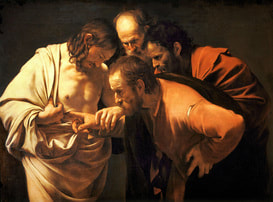 Poor Thomas! One remark by my namesake and he’s forever branded as “Doubting Thomas.” The Church doesn’t honor him each July 3rd for this, however, but for what is absolutely one of the most explicit Professions of Faith uttered in the New Testament: “My Lord and my God!” (see John 20: 24-29, c.f. Luke 7:1-10) In those five words, Thomas boldly expresses his revived belief in his resurrected Master and testifies to His divinity, ready to once again follow Christ and evangelize the world about Him. While this redeeming witness is indeed memorable, it is important to not lose sight of another of Thomas’ statements as recorded in John’s gospel, which shows us more about his personality and in turn, our own faith in Christ, “the assurance of things hoped for, the conviction of things not seen” (Hebrews 11:1). This other mention of Thomas occurs when Jesus decides to travel to the village of Bethany in Judea to raise Lazarus, thus coming dangerously close to Jerusalem (see John 10:22-39, c.f. Mark 10:32-34). Remembering how the Jews there had earlier tried to stone Jesus, the disciples must have felt apprehensive about undertaking such a risky journey (see John 11:8). Thomas, however, seeing Jesus’ determination, exhorts them saying, “Let us also go, that we may die with him” (John 11:16). Brave words for a doubter! Pope Benedict XVI even characterized Thomas’ sincere resolve to follow his Master as something which is “truly exemplary and offers us a valuable lesson: it reveals his total readiness to stand by Jesus, to the point of identifying his own destiny with that of Jesus and of desiring to share with him the supreme trial of death” (September 27, 2006 General Audience). This is the very definition of the Christian life! A life with Jesus is to be with Him through times of joy, peace, hope, success, and prosperity, as well as uncertainty, loss, sorrow, ridicule, and persecution. This is “no sugarplum” as Benedict describes it in Jesus of Nazareth (pg. 67), but without Christ what can one hope for to carry him or her through the trials of life? What would be the point in continuing on? In his final five words recorded in the Bible, Thomas redeems himself after doubting Christ by exclaiming “My Lord and my God!”. The wounds he touched confirm, undoubtedly, the Identity of Christ, the truth of His Message, and the authenticity of God’s infinite Love, not just for Thomas, but all believers! St. Augustine comments on this: Thomas “saw and touched the man, and acknowledged the God whom he neither saw nor touched; but by the means of what he saw and touched, he now put far away from him every doubt, and believed the other” (In ev. Jo. 121, 5). It is important to remember that Saint Thomas, like all the apostles, was personally chosen by Christ in spite of their weaknesses and lack of understanding. But Christ did not pick worthless men! Rather, their failings are a reminder that holiness is a gift from God and not a human creation, given to us, who have our own weaknesses, so God can transform them into the loving image of Christ and mature our faith. Jesus also permitted Thomas to doubt after the resurrection but did not abandon him in those doubts, instead allowing him to bear witness to the truth of the resurrection and thus verify the whole Christian message (see 1 Corinthians 15:14). Finally, we are called to not give in to our doubts regarding God, our dignity and worth, or even hard Church teachings no matter how unpopular they may seem! By looking to Saint Thomas as a model (and by praying to him for guidance), may we find comfort in our insecurities, hope in the future, and the encouragement to persevere through the difficulties of life on the way to our final rendezvous with our Lord and our God. Thomas Wong is an undergraduate student at The Catholic University of America and a member of the Catholic University Knights of Columbus.
In his final words as Supreme Pontiff, Benedict XVI reminded us from the balcony of Castel Gandolfo that he was “simply a pilgrim beginning the last leg of his pilgrimage on Earth.” In doing so, he reminded us, the faithful, that we too are on an earthly pilgrimage. Benedict’s goal, as well as ours, is the Kingdom of Heaven. As pilgrims, we travel around and seek the ways that will lead us to our destination. Though at times we go down the wrong path, we trust that, having faith in God, He will always bring us back to our goal, to be with Him. Thus, we are truly a “Pilgrim Church,” a community of believers on a voyage to Christ.
This past Sunday, we celebrated the great solemnity of The Most Holy Body and Blood of Christ, also known as Corpus Christi. The history of the feast goes back all the way to the early 1200s in modern day Belgium. St. Juliana of Liege, a Norbertine canoness, had a vision of a full moon with a dark spot. The spot, she believed, represented the absence of a feast dedicated to the Blessed Sacrament outside the season of Lent. After reporting her visions to her confessor and bishop, the bishop instituted such a feast in the diocese in 1247. Several years later, Pope Urban IV extended the celebration to the universal church in 1261. It was he who requested St. Thomas Aquinas to write hymns for the feast day. We know them today as the Pange Lingua and Panis Angelicus. Urban successors, most especially Clement V in 1311, reinforced the original decree and promoted the observance of the feast. One of the most beautiful and traditional aspects of the celebration is the procession of the congregation behind the Eucharist encased in a monstrance. On a personal note, this day has always been one of my favorites growing up. I loved walking with my family and friends around the church building (often stopping traffic!), all following our pastor holding the monstrance up as high as he could. In many ways, the Corpus Christi procession mirrors our pilgrimage (our procession) on earth. Together, with other members of the faithful, we are led toward God, whose real presence on earth is in the Eucharist. The Most Blessed Sacrament is the point in which heaven and earth meet. Not only is it our guide on earth, but also our guide to heaven. Processing around, following the Eucharist is a reminder that what we do on earth can lead us to an everlasting reward. By receiving the Eucharist, we are given the strength (both spiritual and physical) to continue on our earthly journey. As St. Thomas Aquinas once wrote, “Per tuas semitas duc nos quo tendimus, ad lucem quam inhabitas” (By your ways lead us to where we are going, to the light where you live.) Victor David is a recent graduate of The Catholic University of America in Washington, D.C. A major contention that many people – both young and old – have with the Church is that it is an institution of “Thou Shalt Nots” and other moral imperatives that have little or no relevance in the modern world. In essence, the Church is seen as little more than an outdated social services agency, or even worse, a dismal and ahistorical museum perpetuating a false sense of reality. This emerging perception of the Church parallels a larger cultural shift from the acceptance of objective truth toward a secular relativism.
In a recent address to a group of U.S. bishops in Rome for their ad limina visit, Pope Benedict XVI proposed that the Church’s response to this “eroded” perception of reality is one of the greatest “spiritual and cultural challenges of the new evangelization.” Because of the Catholic Apostolate Center’s commitment to being an instrument of the new evangelization, this bears much significance on the direction of our work. But what impact does – or should – this emerging situation have on our daily lives? In the words of the Holy Father, “the Church in the United States is called, in season and out of season, to proclaim a Gospel which not only proposes unchanging moral truths but proposes them precisely as the key to human happiness and social prospering”. As Catholics, we are called to uphold the perceptive vision of reality that has been gifted to us by the Holy Spirit through Divine Revelation. It is only through upholding this vision that we can ever hope to accurately understand our place in the world around us and “the deepest truth about our being and ultimate vocation, our relationship to God.” As Catholics, we are beneficiaries of an astonishing intellectual legacy that was developed over the course of two millennia by scholars who examined these mysteries through the complimentary lenses of faith and reason. Contrary to popular opinion, the Church’s moral teaching is not merely a hodge-podge of archaic prohibitions, but a doctrine that is congruent with the logical nature of reality and informed by Divine Revelation. As the Pope explained in his address, the moral teaching of the Church “is not a threat to our freedom, but rather a ‘language’ which enables us to understand ourselves and the truth of our being, and so to shape a more just and humane world. She thus proposes her moral teaching as a message not of constraint but of liberation, and as the basis for building a secure future.” If we are to succeed in being apostles of the New Evangelization, then one of our most critical objectives should be to proclaim the beauty, consistency, and relevance of the Church’s moral teaching, without which we would be left with an incomplete view of our own humanity. Informed by this teaching, it is also important that we serve as prophets in the public sphere of these truths. As Pope Benedict XVI emphasized, “it is imperative that the entire Catholic community in the United States come to realize the grave threats to the Church’s public moral witness presented by a radical secularism which finds increasing expression in the political and cultural spheres.” Even more pertinent to the work of the Catholic Apostolate Center, the Holy Father went on to say that “the preparation of committed lay leaders and the presentation of a convincing articulation of the Christian vision of man and society remain a primary task of the Church in your country; as essential components of the new evangelization, these concerns must shape the vision and goals of catechetical programs at every level.” Blessed John XXIII was once quoted as saying the following: “We are not on earth to guard a museum, but to cultivate a flourishing garden of life.” The New Evangelization is not concerned with re-presenting a forgotten memory from the past, but with re-proposing the living and eternal truth of Jesus Christ that continues to sustain His Church. The Church’s moral teaching is just one part of this truth, but as the Holy Father makes clear, it is an essential part to humanity’s self-understanding. Brett Garland is a Collaborator with the Catholic Apostolate Center. Audio of the Holy Father’s address available here. CNS Report about the Holy Father's address. Editor's Note: This post was originally published in 2012. When I was 12 years old, my favorite movie was Godspell, a fantastic 1973 version of a Broadway musical based on the Gospels of Matthew and Luke. My family knows the songs and performances so well, and in Church we will look at each other and pantomime what the actors do in the movie. Usually, this makes us look like goofballs, but honestly, it has given me a better and long-term understanding of these important parables and gospels. Needless to say, today’s Gospel is featured in the film, and I know it well.
Jesus said to his disciples: “You are the salt of the earth. But if salt loses its taste, with what can it be seasoned? It is no longer good for anything but to be thrown out and trampled underfoot. You are the light of the world. A city set on a mountain cannot be hidden. Nor do they light a lamp and then put it under a bushel basket; it is set on a lampstand, where it gives light to all in the house. Just so, your light must shine before others, that they may see your good deeds and glorify your heavenly Father.” Matt 5: 13-16 This gospel is full of insights to help us understand how to live out the light of Christ in our lives. Think about it. We are the salt of the earth. We, filled with faith in God, are the salt with which all delicious food is seasoned! If we are not adding flavor to the world and sharing our faith, we will become like dirty road salt under cars and feet. We are called to love as Christ loves, to show that we have not only heard the Word of God, but are now going out to season the world with our faith. Likewise, we are the light of the world! Light illuminates the darkness, so how do we illuminate the world around us? In a world that can be so dark at times, what comfort and support do we give to others? How do we exemplify the love of the Father through us? Christ calls us to not only shine our light before all, but illuminate the world and give our all, to all. Pope Benedict XVI and Pope Francis have spoken about the necessity to brighten all corners of the world with our light of faith. The New Evangelization is helping to renew the flicker of faith in our hearts, transforming them into raging and unstoppable flames. As Pope Francis says in his first encyclical, Lumen Fidei, “once the flame of faith dies out, all other lights begin to dim….We come to see that faith does not dwell in shadow and gloom; it is a light for our darkness.” We must remain on our lampstand, careful not to slowly drift under bushel baskets. We can avoid dimming our light by attending Mass frequently to hear the Word and receive the Lord, confessing our sins regularly with a priest, discussing and asking questions about our faith to learn more fully, going outside of our comfort zones to reach those in darkness, and, finally, remaining true in our love and compassion to imitate Christ’s own life. We are the Light of the World, so let’s go act like it! Krissy Kirby is a recent graduate of The Catholic University of America in Washington, D.C. with a degree in Early Childhood Education. 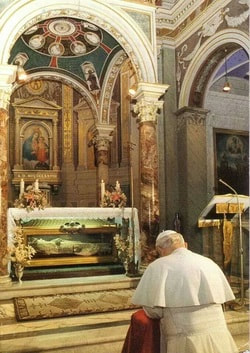 "John XXIII and John Paul II cooperated with the Holy Spirit in renewing and updating the Church in keeping with her pristine features, those features which the saints have given her throughout the centuries." - Pope Francis This past Sunday was a unique and amazing day of four popes, the two pope saints, John XXIII and John Paul II and the two living popes, Pope Francis and Pope Emeritus Benedict! The renewal and updating of the Church called for by the Second Vatican Council, initiated by St. John XXIII, and central to the work of the New Evangelization as articulated by St. John Paul II continued through the efforts of Pope Emeritus Benedict XVI, especially the Synod on the New Evangelization and finding even greater momentum through the witness of Pope Francis. Among them all, along with Paul VI, the Council, and Church leadership in general has called all of the baptized to engage in greater co-responsibility for the life of the Church and for the work of evangelization. Various pundits, both in Church and secular media, are quick to give their sometimes very simplistic analysis of why the two popes were canonized together and the message that Pope Francis is trying to convey. If there is any "message", I believe that it is a continued or re-commitment to the on-going renewal of the Church in trustful cooperation with the Holy Spirit and in prayerful communion with the saints. St. John XXIII and St. John Paul II were both visionary leaders who put forward programmatic plans for not simply renew of the Church as an institution, but renewal of all the baptized in faith and holiness who are called to go forth to the world and renew it as well. In 1959, St. John XXIII said, "Profession of the Christian faith is not intelligible without strong, lively apostolic fervor" (Princeps Pastorum, 32). The Second Vatican Council confirmed this understanding in Lumen Gentium through its teachings about the Universal Call to Holiness and the role of all the baptized in the mission of Christ. St. John Paul II was one of the drafters of the Decree on the Apostolate of the Laity (Apostolicam Actuositatem) along with the then Rector General of the Society of the Catholic Apostolate, Fr. Wilhelm Möhler. St. John Paul taught in his apostolic exhortation Christifedles Laici, which followed the Synod on the Laity in 1987, that The Second Vatican Council has reminded us of the mystery of this power and of the fact that the mission of Christ - Priest, Prophet-Teacher, King - continues in the Church. Everyone, the whole People of God, shares in this threefold mission (14). Just after the close of the first session of the Council, St. John XXIII canonized the Patron of the Catholic Apostolate Center, St. Vincent Pallotti, calling him "an innovator of new ways whereby people could come to know the love of God" (Cf. L'Osservatore Romano, January 23, 2013). Pallotti understood well the call of all to be apostles or what Pope Francis calls in Evangelii Gaudium, "missionary disciples" (120). The Center continues Pallotti's mission in the way that St. John Paul II described it to members of the Union of Catholic Apostolate when he said: Continue to multiply your efforts so that what Vincent Pallotti prophetically announced, and the Second Vatican Council authoritatively confirmed, may become a happy reality, and all Christians become authentic apostles of Christ in the Church and in the world! (Homily at San Salvatore in Onda, June 22, 1986). Mary, Queen of Apostles, pray for us! St. Vincent Pallotti, pray for us! St. John XXIII, pray for us! St. John Paul II, pray for us! Fr. Frank Donio, S.A.C., is the Director of the Catholic Apostolate Center |
Details
Archives
April 2024
Categories
All
|
About |
Media |
© COPYRIGHT 2024 | ALL RIGHTS RESERVED

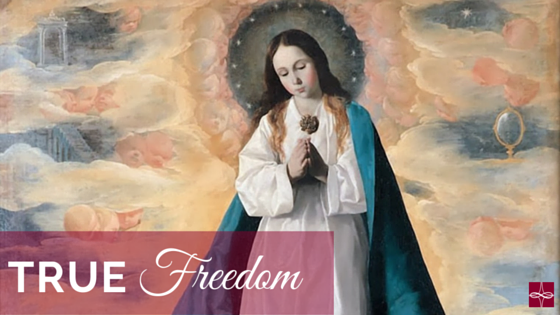

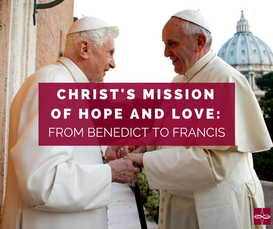
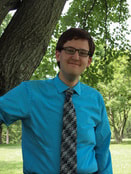
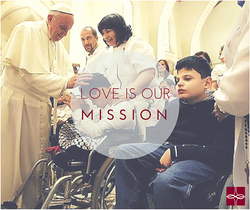

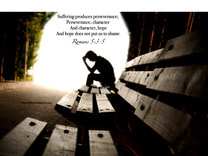
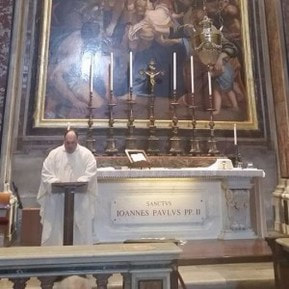
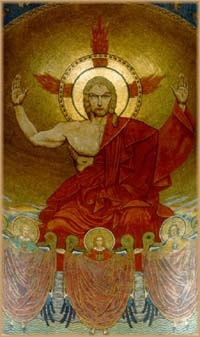
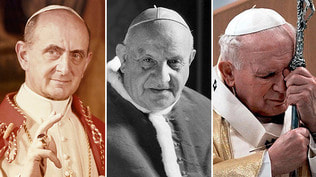

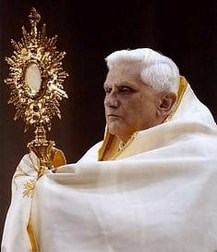
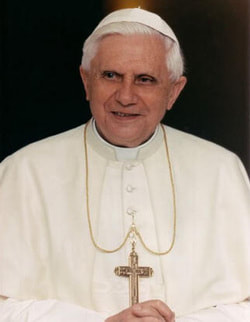
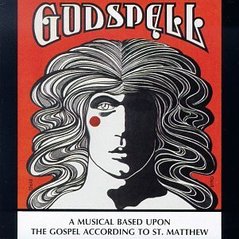
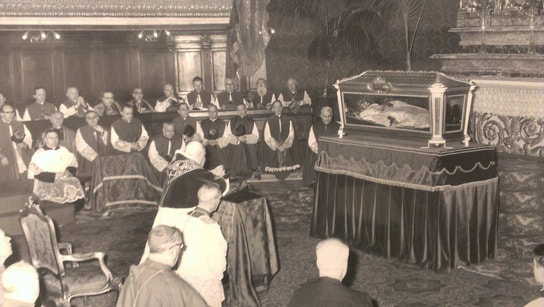
 RSS Feed
RSS Feed